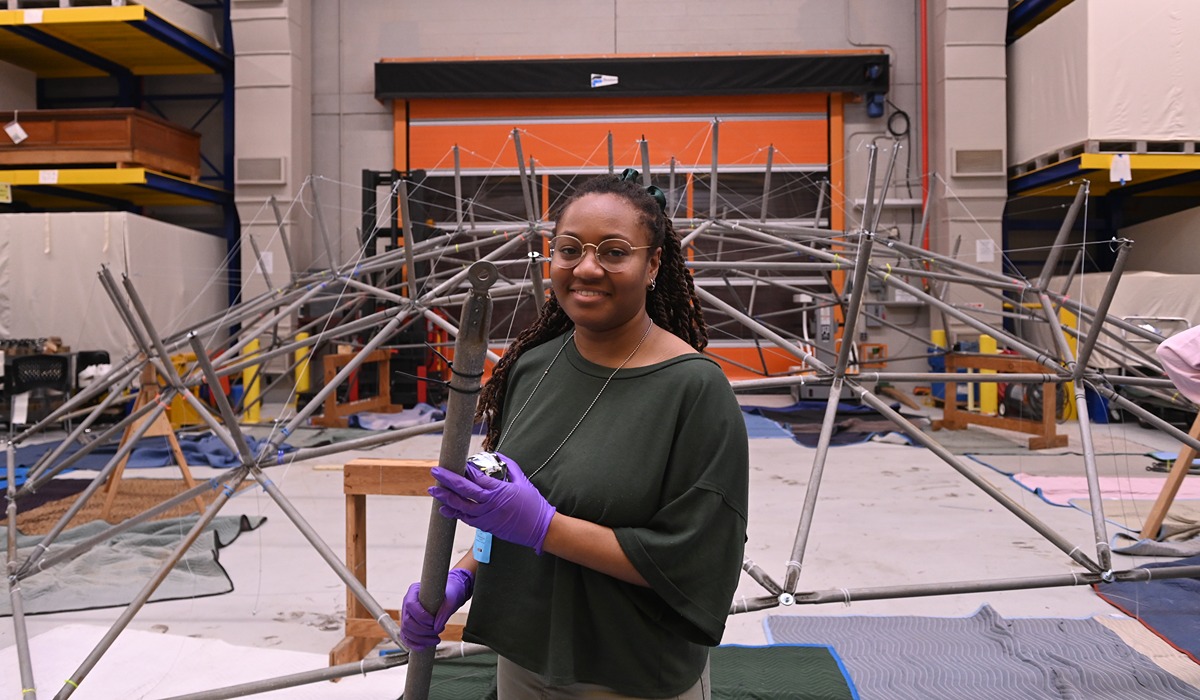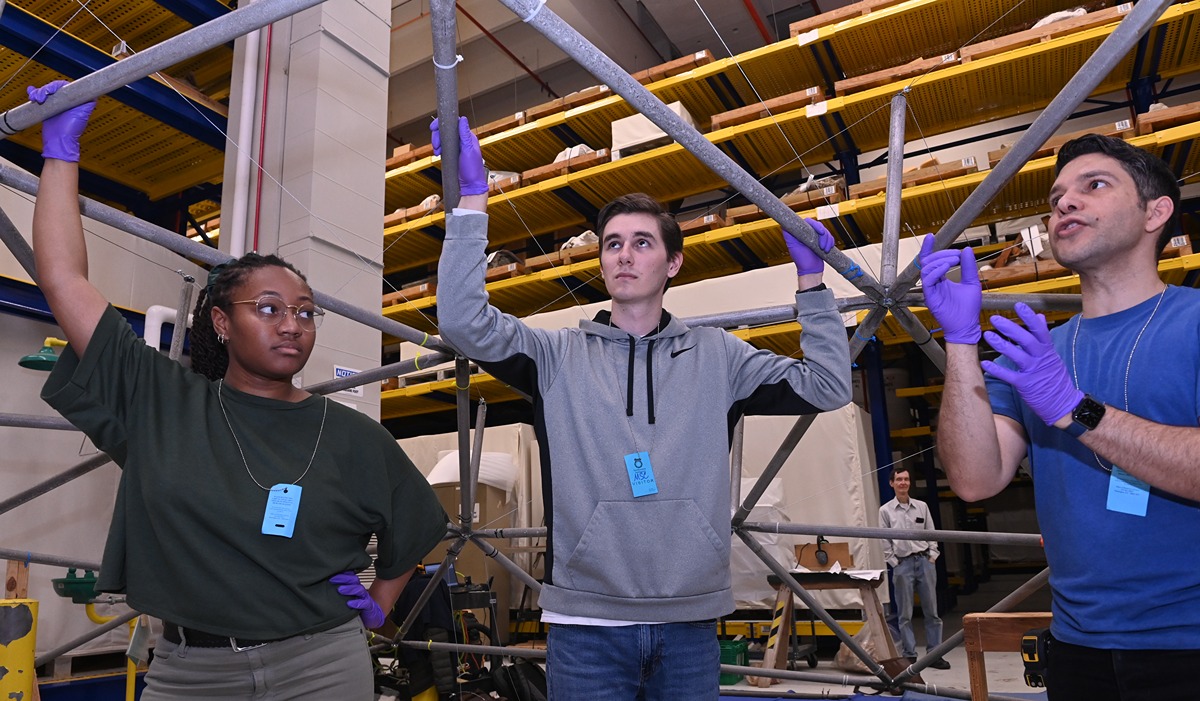

Architecture and net zero design graduate student Adero Brooks strives to be ahead of the curve to build a better world, which is why she chose to study at The Catholic University of America.
Now she’s making that happen through a University partnership with the Smithsonian Institution to reconstruct the first full-scale geodesic dome erected in North America. Known as the “Weatherbreak,” the structure was designed to be assembled almost anywhere by almost anyone and to withstand even the most extreme environmental conditions.
Famed American architect R. Buckminster Fuller coined the term “geodesic dome” to describe his pioneering effort to develop affordable, energy-efficient, and environmentally conscientious housing. The 50 feet in diameter and 25 feet high “Weatherbreak” was built more than 70 years ago by his student Jeffrey Lindsay.
The dome will be reassembled before visitors to the National Museum of American History’s Flag Hall in Washington, D.C., during a two-week exhibit in July. The "Reconstructing 'Weatherbreak' in an Age of Extreme Weather" exhibit will mark the Smithsonian’s first public display of the artifact since its acquisition.
University students, led by their professors and museum curators, conducted a test build in February inside the Smithsonian collections facility where the historic artifact is currently stored.

“I’ve been falling in love with the project and our research. … Seeing it built is the most exciting thing,” said Brooks, while standing under the partially completed dome. “When you are able to be part of projects like this where you can get inside the minds of people who create these forms, it becomes attainable as something you can do in your own studio and own designs.”
The dome concept predated Fuller, but his instantly recognizable patented design was recognized by the American Institute of Architects as “the strongest, lightest and most efficient means of enclosing space yet devised by man.” His work inspired Epcot’s “Spaceship Earth,” the Walt Disney World landmark that greets millions of visitors a year.
Brooks said the nearly 1,000 piece prefabricated dome kit did not come with an instruction manual so they learned about the structure as they assembled it for the first time in decades. They discovered that some of the parts need to be replaced, so Norsk Hydro is donating aluminum and Architectural Systems, Inc., is fabricating missing pieces.
Guiding the students’ work are the School of Architecture and Planning’s Tonya Ohnstad, assistant professor and associate dean for graduate students, and Lorenzo Cardim DeAlmeida, facilities and fabrication shop manager. Collaborators include Washington University in St. Louis faculty and students.
As Ohnstad’s research assistant, Brooks plays a critical role helping to coordinate the project including teaching other students about the structure as they work to resurrect it.
Brooks said she chose the University because she had never seen another dual degree program in sustainable design, which is one of only 17 programs worldwide honored with the U.S. Department of Energy’s Zero Energy Design Designation.
“Catholic University checked all the boxes for me,” said Brooks, with the "Weatherbreak" project providing an opportunity to apply out of the box thinking to advance in her field. “It’s really exciting, people are very interested in the project.”